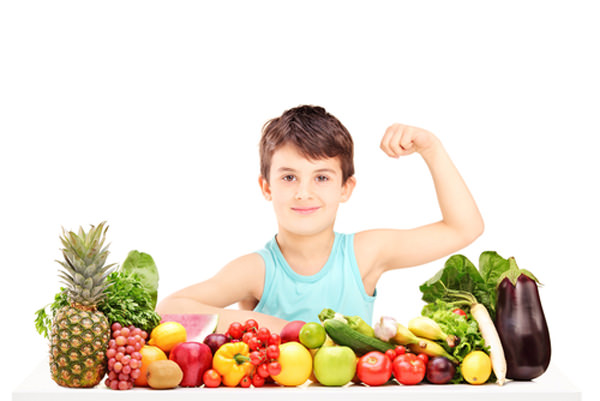Listen up parents! Making sure our preschool children get their ‘5 a day’ (servings of fruits and veggies) can be easy and painless… if you are prepared. Providing our kids with a healthy foundation, helping them acquire a taste for fruits/veggies will be something that stays with them for the rest of their lives. If they get used to eating fresh produce as kids, that will often translate in to adulthood.
Working with a pediatric population, parents repeatedly ask the same questions. So here’s what I tell them.
Kids can get overwhelmed when they see large portions. Serve appropriate amounts for the child’s age. A 2-3 year-old needs one cup fruits and one cup veggies while 4-8-year-olds should consume half a cup more, respectively, per day.
Offer a healthy snack consisting of fruits/veggies every afternoon. Before long kids will know what to expect and look forward to this healthy treat. A few ideas to get started include Fruit Kabobs with Yogurt Dip, Fresh Strawberry + PB Sandwich, and One Ingredient Banana Ice Cream.
Try a new fruit/veggie tomorrow. If today it’s pears, tomorrow try oranges. Mix it up and keep kids interested. Have them take a bite and if they don’t like it now, let them try it again another time. “I don’t like it now” doesn’t mean “I don’t like it forever.”
When eating fruits/veggies, describe the health benefits kids will get from eating it. For example, carrots have vitamin A which will help them see better; spinach contains calcium and iron to grow big and strong. By educating children at their level, you’re empowering them to make healthful decisions. Constant repetition will help the concept sink in.
Consider buying fruits/veggies with different colors and textures. Choose vibrant shades or season with herbs and spices for more fun and visual appeal. Even kids can’t refuse yellow cauliflower (white cauliflower seasoned with turmeric) or bright orange butternut squash topped with nutmeg or cinnamon. Better yet, put that butternut squash in macaroni and cheese!
Fruits/veggies don’t need to be eaten whole or fresh to reap their benefits. Take a family favorite dish like lasagna and add in some ingredients you’d wish they’d eat. Dice spinach, zucchini, and carrots, throw it in lasagna and voila! It’s a win-win for everyone.
Cookie cutters are NOT just for making cookies. Kids will be consuming a lot more fruits/veggies when they come in crazy fun shapes. I’ve had a lot of success with sweet potato hearts, melon stars, and Sesame Street shaped anything. Check out these yoga pose cookie cutters!
Food personification? Give it a try! By associating foods with kid-friendly qualities and names kids can relate to, they won’t turn it down. Iron Hulk spinach gets eaten much quicker than that ‘leafy green vegetable’.
Set a good example and model the foods you want your kids to eat is key. I know you’ve heard it a million times, but kids mimic what adults eat and learn from our eating cues.
You know who your most eager sous-chef is, so involve kids in the kitchen and let them help prepare recipes under adult supervision. Washing, peeling, cutting, and tossing ingredients causes kids to feel a sense of accomplishment and be more willing to eat fruits/veggies.
Using plates, utensils, and stickers decorated with fun characters also works. In a recent study, elementary students were twice as likely to choose broccoli over chocolate if the broccoli came with an Elmo sticker. Try it and be wowed!
Though fruit juice is a way for kids to get additional nutrients, it’s loaded with calories and sugar. Too much juice can cause weight gain, cramps, gas, tooth decay, and a poor appetite for healthy foods. Recommendations for 100% fruit juice consumption from the American Academy of Pediatrics (AAP) include: 4-6 oz/day for 1-6-year-olds and 4-8oz/day for older kids and adults. Try this Pineapple Agua Fresca for a healthier take on homemade juice.
Bottom line is that preschool children go through food jags. They may only eat red foods or chicken nuggets for a week. Be persistent but not forceful and typically by the following week, kids will be in to new food interests and you can try again.
Author Aimee Zipkin is a registered dietitian with a passion for delicious food and providing nutrition education. Aimee received her MS in Nutrition and Public Health from Teachers College, Columbia University and completed a rigorous clinical dietetic internship through North Shore-Long Island Jewish Health System. Follow her on Twitter at @AimeeZipkin.
Also Read:

